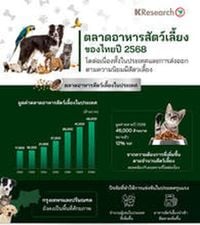The Director-General of the Department of International Trade Promotion (DITP), N.S. Sunanta Kangwanakulkit, announced on March 17, 2025, plans to facilitate Thai exports by enhancing trade opportunities with various countries, targeting particularly high-demand markets such as China. This strategic focus aligns with global trends, as China seeks to diversify its sources of cocoa due to increasing demand and rising international cocoa prices.
Reports from DITP indicate significant opportunities for Thai cacao exportation. The global cocoa market has seen price fluctuations, with futures contracts soaring to unprecedented heights. Initially, cocoa prices hovered around $2,500 per ton at the end of 2022, but as of April 2024, they peaked at approximately $12,000 per ton. By December 2024, prices had dipped somewhat yet remained above the $10,000 mark. This trend presents Thailand with ripe possibilities for exporting cocoa to China, whose cocoa imports reached $1.335 billion in 2024—a notable increase of 29.29%.
Chinese imports primarily came from Malaysia, Indonesia, Singapore, Italy, and Belgium, which accounted for values of $258.02 million, $204.15 million, $136.17 million, $135.81 million, and $80.38 million, respectively. Thailand ranked 28th, exporting $4.86 million worth of cocoa, merely 0.36% of China’s total imports. Despite this modest share, the rising demand for cocoa suggests potential growth for Thai exporters.
Recent data indicates China's cocoa import trends are shifting. While cocoa has been widely utilized primarily for chocolate production, it’s now gaining traction across industries such as modern teas, ice creams, and baked goods, with two-thirds of cocoa currently used beyond just chocolate-making. The trend is prompting manufacturers within China to seek new cocoa production sources, stimulating growth opportunities not only for Thai farmers but also for local plantations like those found on Hainan Island and Yunnan.
Sunanta emphasized the Thai government's commitment to establishing cocoa as a cash crop for the future. Initiatives are underway to develop farmer networks, educate producers, and improve cocoa quality. Export guidelines include meeting international standards such as Good Manufacturing Practices (GMP) and Hazard Analysis Critical Control Point (HACCP) to strengthen global competitiveness.
On another front, on March 7, 2025, the Indian government announced the official lifting of the ban on 100% broken rice exports, effective immediately. This development marks a significant change from previous restrictions instituted since September 2022 due to El Niño-induced droughts, which severely hampered rice production.
Thanks to substantial rainfall during 2024, India has been able to boost its rice yield, leading to this policy shift. The Rice Exporters Association (REA) president, BV Krishna Rao, estimates this decision will enable India to export about 2 million tons of 100% broken rice this year. The REA's Rajiv Kumar explained how this significant move will likely lead to decreased global rice prices due to the influx of product availability.
India’s Food Corporation reported holding 67.6 million tons of rice as of February 2025—far exceeding government targets. With projections from S&P Global Commodity Insights indicating Indian rice exports between October 2024 and September 2025 could soar by 49.3%, reaching 21.5 million tons, the reversal of the rice export ban signals concern for competitive nations.
The United States Department of Agriculture (USDA) forecasts Indian rice production for the 2024-2025 year at 145 million tons—a staggering 27% of total global production. This is expected to support India's target of exporting 22.5 million tons, which would significantly impact global rice markets, especially against competitors like Thailand and Vietnam.
With India's focus on maintaining its significant role in the global rice market, the anticipated increase in demand could pressure other rice-exporting countries, including Thailand and Pakistan. The Agricultural Market Information System (AMIS) reported declines in global rice and parboiled rice prices since early March, attributed to weakening demand and rising competition.
For Thailand, as the world's second-largest rice exporter after India, this mass return of Indian rice to global markets poses immediate challenges. Amid increased price pressures, Thai exporters must adapt strategies, elevATING product quality to cater to premium markets, particularly within the European Union, Middle East, and Japan. Strategies should encompass elevATING the profile of quality rice varieties, including jasmine rice and organic options.
Both India and Thailand's changing export landscapes highlight the volatility and susceptibility of the agricultural market to environmental and economic pressures. Innovations in production processes and active marketing strategies through online platforms are deemed necessary for Thailand to sustain its competitive edge amid fierce challenges from both India and other exporting nations.








